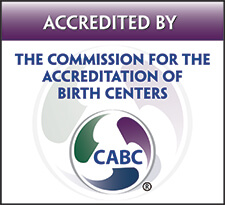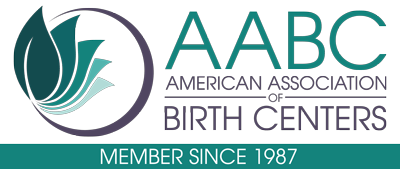 If you’re not familiar with freestanding birth centers, Certified Nurse Midwives, and Certified Professional Midwives, you might have some questions when deciding if Best Start is the right fit for you. Maybe you’re wondering if you could really give birth out of the hospital (you can!), and if you do, what’s that experience look like? (High-quality, individualized care in a calm environment!)
If you’re not familiar with freestanding birth centers, Certified Nurse Midwives, and Certified Professional Midwives, you might have some questions when deciding if Best Start is the right fit for you. Maybe you’re wondering if you could really give birth out of the hospital (you can!), and if you do, what’s that experience look like? (High-quality, individualized care in a calm environment!)
Our Clinical Director, Shari Stone-Ulrich, MSN, CNM sat down this month to answer the nine most common questions that community midwives are asked.
To give birth at Best Start, you must have a “low-risk” pregnancy. Low-risk pregnancies are excellent candidates for birth center care because it’s low intervention and allows birth to unfold on its own. In most pregnancies, this produces excellent outcomes, but when pregnancies are higher risk, birth centers may not be appropriate.
1. What is the definition of “Low-Risk Pregnancy?”
Generally, one baby, head down, at term, with no prior uterine surgery or other chronic medical problems requiring medications.
Every situation is unique, if you’re unsure if you qualify as “low-risk,” contact us and we can help you find out!
Giving birth outside of the hospital doesn’t mean your providers won’t be able to care for you if something unexpected or even emergent happens. Our midwives are experts in birth, it’s what they do! They’re all trained to confidently handle any situation that arises. We can handle most situations right here in our birth center and in the rare situations we can’t, we are always prepared to transfer you to a nearby trusted hospital. It can be scary to think about something going differently than you expected, but remember, most births go smoothly and while they’re magical, they’re medically “boring.” Birth is a normal physiological process, not a medical emergency!
2. What if the cord is around the baby’s neck?
Nuchal cords are fairly common with about 30% of babies born with one or more. All birth providers are trained on how to handle nuchal cords, and only rarely does it affect the ability to have a vaginal birth.
3. What if something “bad” happens?
Everyone has seen a fictionalized birth on television with plenty of exciting dialogue and action ending in an emergency cesarean and they “save the baby.” Out of hospital, that kind of excitement is very rare, because we do not augment labor with Pitocin making contractions too close and too strong, nor do we have epidural anesthesia which can cause low blood pressure and fetal heart rate decelerations. Real births, luckily, are pretty boring until the baby is born.
Remember, birth is a NORMAL physiological process that your body is innately equipped to handle. By letting it unfold without excessive medical intervention, we are able to limit added excitement in the form of medical side effects.
4. I had Group B Strep and needed antibiotics in labor with my first baby. Can I birth out of the hospital?
Group Beta Streptococcus (GBS) is a fairly common normal flora of the intestines outside of pregnancy. It can come and go from one pregnancy to the next. We encourage Probiotics to decrease GBS in your body. In pregnancy and birth, babies can get sick from being exposed to GBS in the vagina. We culture the vagina and rectum at 36 weeks, and if positive for GBS, we will discuss IV antibiotics in labor, which can be given at home and birth center.
5. What if I bleed too much?
Everyone loses some blood at the birth from the placenta detaching from the uterus. We work to prevent anemia because a normal blood loss could be too much for you. We don’t routinely start an IV in labor, but we can if indicated, like for dehydration or excessive blood loss. Out of hospital, after the birth, we have several medications that we can use to limit blood loss, such as Pitocin, Methergine and Cytotec if needed, but they are not used routinely. If the blood loss is enough to cause dizziness, we will consider transfer to the hospital, in case you might need blood products. Being culturally sensitive, of course, no one wants blood products, but it can be lifesaving.
6. What if the baby doesn’t breathe when they’re born?
Every licensed and certified midwife is taught skills of Neonatal Resuscitation. About 5% of the time, babies will need some help to start breathing after birth. Midwives have all the equipment necessary to help them start breathing, such as bag and mask to fill their lungs with air, medications such as oxygen and adrenaline. Chest compressions or Cardiopulmonary Resuscitation (CPR) is needed very, very rarely.
7. I really want to avoid a cesarean!
Then an out of hospital birth is the way to go! Midwives try to use interventions as needed, not routinely. For instance, inducing your labor doubles the risk of cesarean. The national rate of cesarean is around 30%, with a wide range depending on the hospital, from 15%-75% (!) Midwives routinely have cesarean rates of less than 10%. Even if you require a transfer to the hospital, you still have a very good chance of vaginal birth, because you have been educated all along of the risks for interventions.
You can find Best Start’s Cesarean Section statistics and more here.
8. What happens if I Transfer to the Hospital?
Midwives assess your risk status at every visit, and continually in labor, trying to keep you as healthy as possible throughout your pregnancy and birth. Our job is to facilitate the safest place to birth for you and your baby. The emergency transfers using an ambulance are very rare; the majority of transfers are for long labors needing augmentation and/or pain relief and usually your birth partner can drive you in your car. Prior to COVID, we would usually go with you for the transfer to be a bridge of information between the community midwife and the hospital staff of nurses, midwives and doctors.
9. When do I see the doctor?
If you are normal and healthy without any complications, you may never need to see a doctor during the pregnancy. About 80% of women are considered low-risk and your midwife will help you meet a doctor if one is needed.
Perhaps the next most common questions we get at Best Start are some forms of “what pain relief methods do you offer if you don’t use epidurals?” and “will my insurance cover this?” You can read about all of Best Start’s comfort measures here. Trust us, an epidural is NOT the only method out there. We utilize a wide variety of analgesics, mixing and matching what works best for each client. We also strive to make birth center care financially accessible for everyone who wants it, so we accept many private insurances in addition to Medi-Cal and Tricare.
We know how important it is to give birth your way, where you feel comfortable and supported. We hope that these frequently asked questions resolved a concern you had, taught you something new, or perhaps solidified your confidence in Best Start’s care. As always, we have both virtual and in-person tours and would love to meet you and support you through your care.






